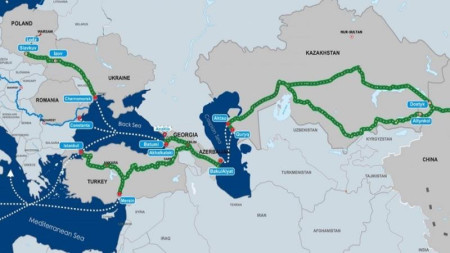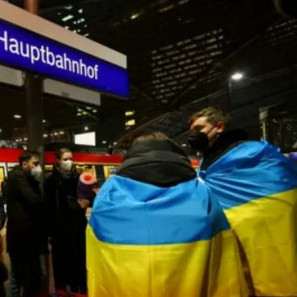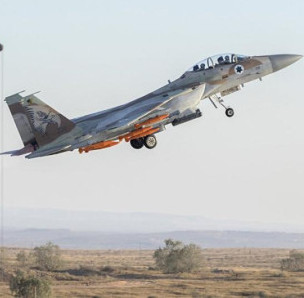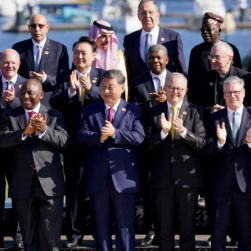
Recently, the Trans-Caspian International Transport Route (TITR) aka the Middle Corridor has come under increased scrutiny among both regional players, the USA, Great Britain and the EU. The TITR has been implemented since 2013 with an original intent to ensure supplies from China through Kazakhstan, the Caspian Sea, Azerbaijan and Georgia to Turkey and further to Europe. But over the last few years, the Middle Corridor has been arousing heightened interest among regional and extra-regional players for some other reason.
First, Kazakhstan, Azerbaijan, and Georgia do have something to offer to each other, Turkey and Europe. Thus, the Middle Corridor has boosted Kazakh grain exports to Azerbaijan and Turkey, while Baku is selling lots of fruits and vegetables to Astana. It has also allowed for Turkey’s increased trade turnover with both of them, promoting its influence in Central Asia. So far, cargo carriage volumes have not been that high to damage Russia’s transit potential. Thus, Kazakh energy supplies mainly keep flowing through Russia via the Caspian Pipeline Consortium (CPC), with far lesser volumes taking the Baku-Tbilisi-Ceyhan (BTC) route.
Second, after the war in Ukraine began, routes bypassing Russia to Europe grew a lot more vital politically, and regional players intensified efforts to boost the Middle Corridor’s capacity. Part of this is the Azerbaijan-Turkey-Europe energy corridor project from the so-called Jabrayl Energy Hub. Its construction is linked to Azerbaijan’s plans on establishing a green energy zone in the liberated territories to build the Khudaferin and Gas Galasi hydroelectric power plants, solar electric generating stations in the Jabrayl region, wind mill farms in the Lachin and Kalbajar regions, as well as energy distribution networks. The resulting energy output will be exported to Europe via the abovementioned route.
To develop container-type and other freight traffic activities, new ports are being built on the Caspian coast. Thus, May 2023 saw Azerbaijan’s village of Alyat 65 km south of Baku — at the intersection of North-South and TITR international transport corridors, along with key roads and railways — commission the 1st phase of a new commercial seaport with a capacity of up to 15 million tons per year, including 50,000 containers. Cargoes arriving at the port from various directions would be transported to Europe along the Baku-Tbilisi-Kars railway or by eastwards ships, the Economy Ministry of Azerbaijan said. The railway capacity towards Georgia is also planned to increase to an annual 10 million tons. Previously, these purposes engaged the Baku seaport, whose cargo turnover grew to 4.4 million tons after modernization in 2017, but as compared to the new Alyat site’s capacity, this figure has ceased being really impressive. The second construction phase should bring the port complex’s capacity up to 17 million tons and 150,000 containers, and the third one — to 25 million tons and 500,000 containers respectively.
Over the longer term, the Azerbaijani leadership would like to plug the Zangezur section into the Middle Corridor as well. According to the republic’s Deputy Minister of Digital Development and Transport Rahman Hummatov, “the Zangezur corridor is capable of significantly expanding the capacity of the Trans-Caspian International Transport Route.” Currently, work is underway to reconstruct roads and railways in the Karabakh and East Zangezur economic regions. Still, final completion requires a 40-km section through Armenian or Iranian territories, which has not been stipulated by any agreements yet.
Georgia is also seeking for its place in the developing transport and logistics structure the TITR’s key railway section Baku-Tbilisi-Kars runs through. In 2024, that country plans to sign a new document on the Middle Corridor with Azerbaijan. Georgian Minister of Economy and Sustainable Development Levan Davitashvili called it “the most promising and reliable route between European and Asian countries.” The new deal should define the countries’ specific roles in its development. Moreover, Georgia is trying to coordinate its TITR plans with other countries in the region. Thus, developing the Middle Corridor has become a major talking point during Georgian Parliament Speaker Shalva Papuashvili’s visit to Central Asia in early April 2024.
Kazakhstan is also showing greater interest in developing the corridor. While previously used for container freight from China and oil transportation, now it would increase transportation of other crude minerals. The authorities of Kazakhstan and China have recently signed an agreement to expand container traffic, with 200 additional transport trains to run along the route, capable of carrying over 20,000 twenty-foot equivalent containers. Also, plans are on the table to ramp up oil supplies via Azerbaijan and Georgia to Turkey. Kazakhstan's national oil company Kazmunaigas and its Azerbaijani counterpart SOCAR have signed a deal to raise oil transit from 1.5 million to 2.2 million tons per year via the Baku-Tbilisi-Ceyhan pipeline, with a long-run prospect of up to 3 million tons. Besides, Baku would like to purchase Kazakh raw materials to load its refineries as it faces a domestic oil production decline.
As part of efforts to make the route more attractive, negotiations are underway to reduce sea transportation tariffs from Aktau to Baku. In the future, Kazakh oil would be pumped along the Baku-Supsa route for shipments via the Georgian port of Poti.
Kazakhstan places major focus on developing its ports. The key one is Aktau, having a throughput capability of 19 million tons per year. To meet future needs, it has to be extended, for which purpose construction is underway for a new port of Kuryk, some 60 km south of Aktau. It is largely meant for processing oil from Kazakhstan’s Kashagan field to handle an annual 7 million tons of cargo.
Once the plans are implemented, the TITR may become an arch-rival of Russian Railways JSC when delivering Central Asian resources to Europe, but not Chinese goods — the route running through Russia is 30% cheaper and almost twice as fast.
The Middle Corridor may even prove beneficial to Russia itself as a goods flow alternative amid Western sanctions. But there is a danger on the part of America that seeks “supervision” over China-Europe transport routes to control Beijing’s cooperation with the EU, steering it on the “right” course.









